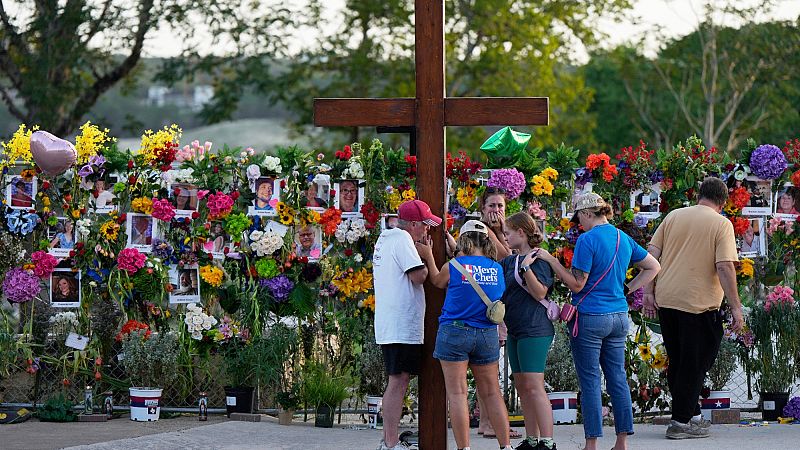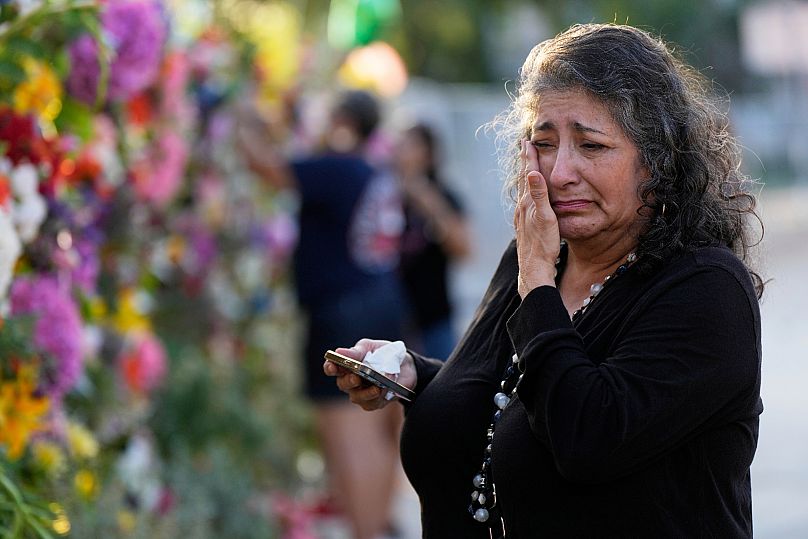
Shock has turned into grief across central Texas, where at least 120 people have died from flash flooding and more than 170 are still reported as missing.
Images of those who have died, along with candles and flowers, now decorate a fence in Hill Country – a growing tribute that reflects the size of the disaster in the region.
Victims include three friends who had gathered for the 4 July weekend, eight-year-old sisters who were at summer camp and a 91-year-old grandmother.
Authorities said they were reviewing lists of those still unaccounted for, but that these tallies can often fluctuate in the immediate aftermath of a disaster.
Texas authorities have set up disaster recovery centres for those affected, offering survivors a hub to register for federal assistance and other services. Grocery store gift cards were distributed to low-income households, and financial aid was offered to cover hotel stays and utility bills.

Search and recovery teams continued to comb through debris and riverbanks in the Hill Country and its surrounding areas, where some of the worst damage had occurred. Officials said nearly 100 victims have been found in Kerr County alone.
Survivors have described narrow escapes during the nighttime flooding. One woman said she and others, including a toddler, climbed into an attic and then onto a roof to avoid rising waters. They watched cars float past and heard screams in the dark.
US President Donald Trump is scheduled to visit Texas on Friday. He has pledged to give whatever relief Texas needs to recover.
“I think it’s awesome that he cares to come down here and help us and do what he can,” said Kerrville resident Margaret Marrell, as she visited a memorial with flowers and photos of the flood victims.
What happened?
The Guadalupe River in Texas surged more than eight metres in just 45 minutes last Friday, destroying homes, camps and vehicles. The disaster unfolded as heavy rains continued across Texas into the weekend, prompting more flash flood warnings.
Authorities have come under scrutiny over whether proper warnings were issued to camps and residents in an area long known for severe flash flooding. Officials defended their actions, stating that they had not expected such an intense downpour, which was the equivalent of months’ worth of rain for the area.
Texas Governor Greg Abbot called on state lawmakers to approve funding for new warning systems and emergency communications in flood-prone areas. "We must ensure better preparation for such events in the future," he said in a statement on Wednesday.
Forecast service AccuWeather, along with the US National Weather Service, had issued warnings about potential flash flooding hours before the devastation.
For years, scientists have been sounding the alarm that climate change is intensifying extreme weather events, including flash floods, around the world.
Studies continue to show that warmer oceans and a wetter atmosphere are fuelling stronger and more frequent storms everywhere from Europe to the US.







